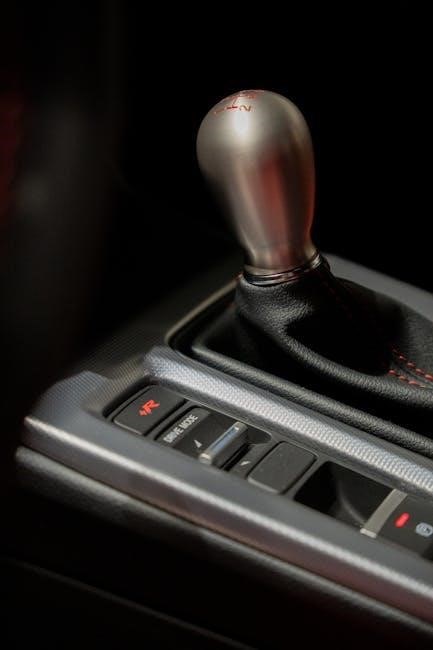Automatic to manual transmission conversion kits enable drivers to switch from automatic to manual transmissions, offering enhanced control and performance. This complex process involves modifying the vehicle’s entire drivetrain system, requiring specialized components and technical expertise. While challenging, the conversion is popular among car enthusiasts seeking a more engaging driving experience.
Overview of Transmission Conversion Kits
Transmission conversion kits are specialized tools designed to facilitate the switch from automatic to manual transmissions. These kits typically include essential components such as the clutch system, gearshift assembly, and necessary hardware. They enable drivers to achieve better control and performance while addressing the complexity of modern automatic systems. The process often requires additional modifications, such as updating the ECU and drivetrain components. While challenging, conversion kits provide a cost-effective alternative to purchasing a new manual vehicle, appealing to enthusiasts seeking enhanced driving experiences.
Importance of Understanding Transmission Systems
Understanding transmission systems is crucial for a successful conversion from automatic to manual. It involves knowledge of torque converters, planetary gearsets, and clutch mechanisms. Familiarity with how automatic transmissions function ensures proper integration of manual components. Misunderstanding these systems can lead to costly errors and potential vehicle damage. Proper comprehension aids in selecting the right conversion kit and performing precise modifications, ensuring compatibility and optimal performance post-conversion.
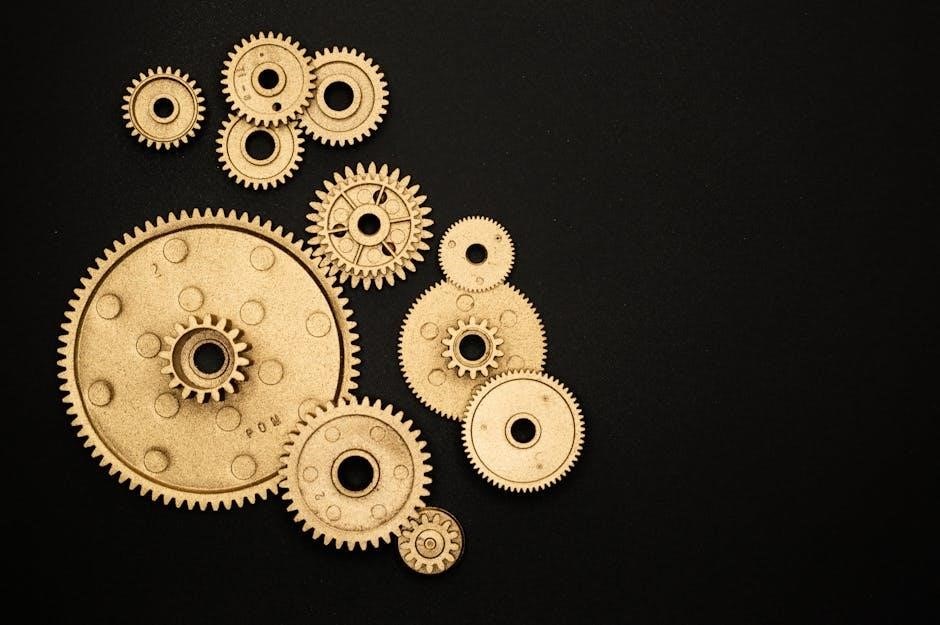
Basics of Automatic and Manual Transmissions
Automatic transmissions use torque converters and planetary gears for seamless shifting, while manuals rely on driver-operated clutches and gear selection for control. Both systems optimize performance differently.
How Automatic Transmissions Work
Automatic transmissions operate using a torque converter, which replaces the manual clutch, allowing the engine to stay running without stalling. The system includes planetary gearsets that automatically shift gear ratios based on driving conditions. A transmission control module (TCM) uses sensors and software to determine optimal shifting points, ensuring smooth acceleration. Hydraulic pressure engages and disengages clutches within the gearbox, seamlessly transitioning between gears. This design eliminates manual intervention, making driving easier, especially in stop-and-go traffic.
How Manual Transmissions Work
Manual transmissions require driver input to change gears. The clutch pedal disengages the engine from the gearbox, allowing manual gear shifts. Pressing the pedal fully enables smooth transitions between gears using the shift lever. As the driver shifts, they must match the vehicle’s speed to the gear, typically by easing off the clutch and adjusting acceleration. This mechanical interaction provides direct control over the vehicle’s power delivery, enhancing driver engagement and precision.
Key Differences Between Automatic and Manual Transmissions
Automatic transmissions shift gears automatically using a torque converter and planetary gearset, while manual transmissions require driver input via a clutch and shift lever. Automatics are easier to use, especially in heavy traffic, but manuals offer better fuel efficiency and control. Manual transmissions are typically lighter and more cost-effective, while automatics provide convenience and ease of use, making them ideal for different driving preferences and conditions.
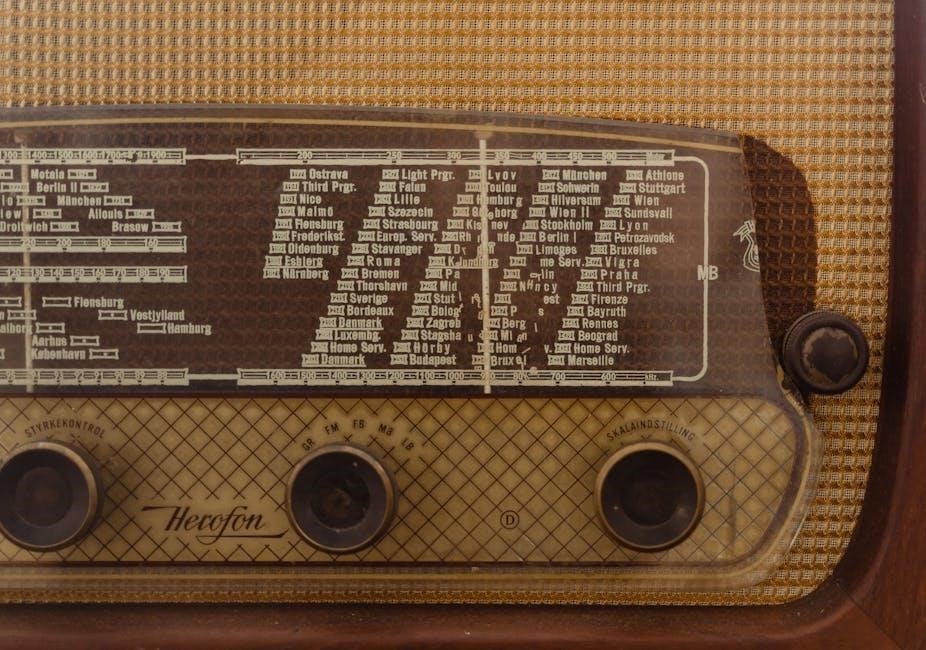
Why Convert from Automatic to Manual Transmission?
Converting to a manual transmission enhances driving engagement, offering better control and fuel efficiency. It connects drivers more intimately with their vehicle, ideal for enthusiasts seeking improved performance and a more immersive driving experience, despite the complexity and cost of the conversion process.
Performance and Control Benefits
Converting to a manual transmission significantly enhances performance and control. Drivers gain precise gear control, optimizing acceleration and responsiveness, particularly in racing or hilly terrain. The direct connection between the driver and the vehicle fosters a more engaging experience. Manual transmissions often improve fuel efficiency, especially in city driving, by allowing better control over gear usage. Additionally, manuals typically weigh less than automatics, improving power-to-weight ratio and handling. These benefits make manual conversions appealing for drivers seeking improved performance and driving dynamics.
Cost Savings on Fuel Efficiency
Manual transmissions typically offer better fuel efficiency than automatics, especially in city driving. By allowing drivers to control gear shifts, manuals reduce unnecessary energy loss. This direct engagement optimizes power delivery, improving mileage. Over time, the savings on fuel costs can offset the initial conversion investment. Additionally, manuals often require less complex cooling systems, further enhancing efficiency. For eco-conscious drivers, a manual conversion can be a cost-effective, environmentally friendly choice, providing long-term financial benefits alongside improved performance.
Enhanced Driving Experience
Converting to a manual transmission elevates the driving experience by offering greater control and engagement. Drivers enjoy the tactile connection of shifting gears, fostering a deeper bond with the vehicle. Manual driving requires skill and attention, making every journey more engaging. This shift from passive to active driving is particularly rewarding for enthusiasts, as it delivers a sense of accomplishment and joy behind the wheel. The direct power delivery without an automatic torque converter enhances responsiveness, especially on winding roads or during spirited driving.
Understanding the Conversion Process
Converting from automatic to manual transmission involves replacing key components like the transmission, clutch, and pedal assembly. It requires technical expertise and specialized tools.
Assessing the Feasibility of Conversion
Before converting, evaluate your vehicle’s compatibility with manual transmission components. Check if the engine, chassis, and ECU can support the swap. Consider the cost of parts like the transmission, clutch, and pedal assembly. Ensure local regulations permit such modifications. Assess your mechanical skills or the need for professional help. Finally, weigh the benefits against potential challenges, like loss of warranty or resale value, to decide if the conversion aligns with your goals and budget.
Required Components for Conversion
The conversion requires a manual transmission unit, clutch assembly, pedal kit, and linkage system. Additional components include a flywheel, pressure plate, and hydraulic or cable-actuated clutch slave cylinder. The transmission crossmember and mounts must be updated to fit the manual gearbox. An ECU reflash may be necessary to adapt engine settings for manual operation. Ensure all parts are compatible with your vehicle’s make and model for a successful conversion.
Step-by-Step Installation Guide
Begin by removing the automatic transmission and associated components. Install the manual transmission, ensuring proper alignment with the engine. Next, fit the clutch assembly, including the flywheel and pressure plate. Connect the clutch pedal and linkage system, followed by the gearshift assembly. Reinstall the driveshaft and update the transmission mounts. Finally, reflash the ECU to accommodate manual transmission settings. Consult a professional if unfamiliar with the process, as improper installation can lead to mechanical failure.
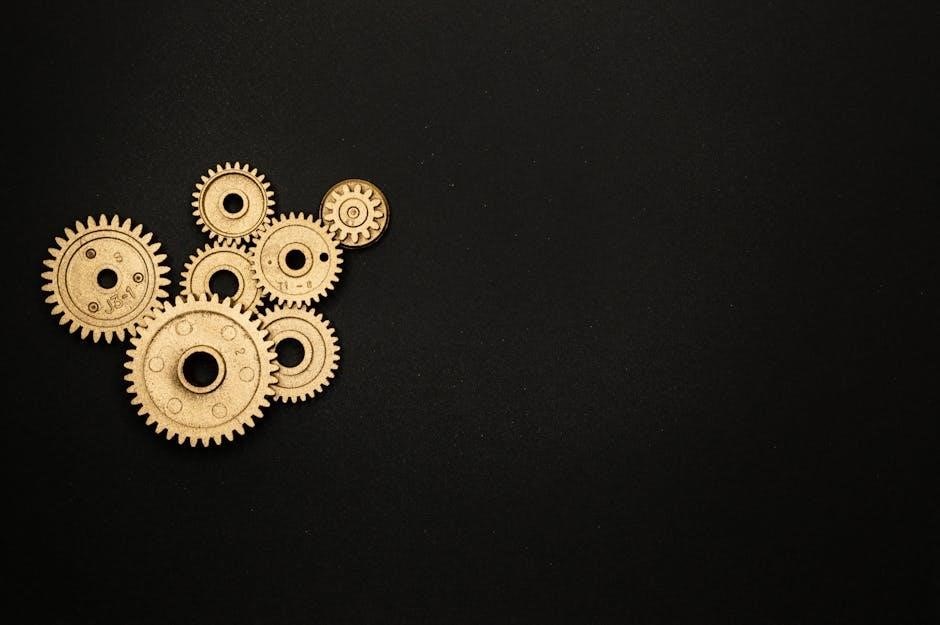
Cost Implications of the Conversion
Converting from automatic to manual transmission involves significant upfront costs for kits and labor, but it may offer long-term savings on fuel and maintenance.
Initial Investment in Conversion Kits
The initial investment for an automatic to manual transmission conversion kit can vary widely, depending on the vehicle make and model. Basic kits may include a manual transmission, clutch, and necessary hardware, costing between $2,000 and $5,000. However, for high-performance or specialized vehicles, the price can escalate significantly, reaching upwards of $10,000 or more. Additional costs for labor, if hiring a professional, can add another $1,000 to $3,000 to the total expense. DIY enthusiasts may save on labor but must invest time and effort into the complex installation process. It’s important to research and compare kits to ensure compatibility and quality, as cheaper options may lack necessary components or durability. Proper planning and budgeting are essential to avoid unexpected financial setbacks during the conversion.
Long-Term Maintenance and Repair Costs
Manual transmissions generally require less maintenance than automatics, but long-term costs can still arise. Components like the clutch may need replacement every 50,000 to 100,000 miles, costing $500 to $1,500. While major repairs are rare, they can be expensive if needed, potentially exceeding $2,000. Regular inspection of transmission fluid and gear synchronizers is recommended to prevent wear. Overall, manual transmissions often have lower long-term maintenance costs compared to automatics, making them a cost-effective choice over time.
Comparing Costs to Buying a Manual Vehicle
Converting an automatic to a manual transmission can often be more expensive than purchasing a vehicle already equipped with a manual transmission. The cost of conversion kits, additional components, and labor can exceed the price of a manual vehicle. In contrast, buying a manual car upfront may be more cost-effective, as it avoids the need for extensive modifications. This makes purchasing a manual vehicle a more financially viable option for many drivers seeking a manual driving experience;
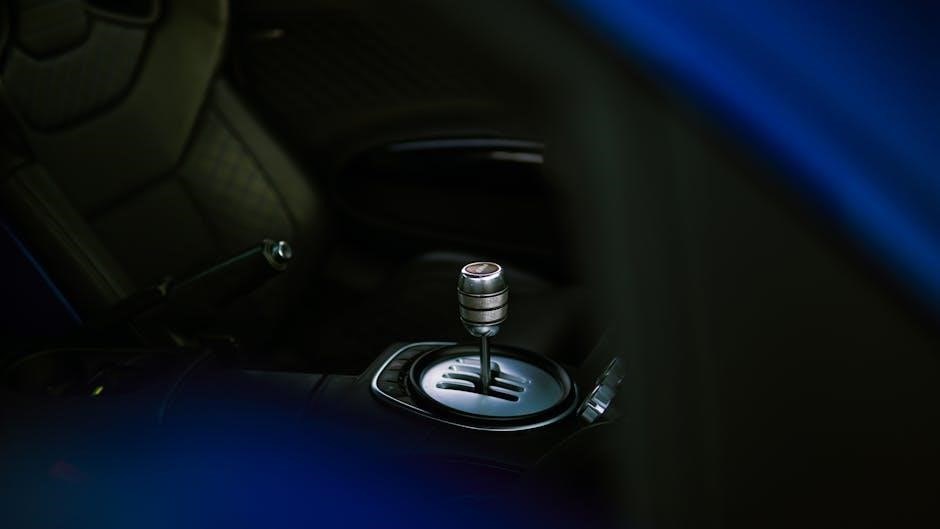
Benefits of Converting to Manual Transmission
Converting to a manual transmission enhances driving engagement, offering better control and responsiveness. It often improves fuel efficiency and reduces long-term maintenance costs. Drivers experience a more connected and thrilling driving experience, with greater customization options to suit their preferences. Additionally, manual transmissions are generally more reliable and less prone to failure compared to automatics, making them a popular choice for enthusiasts seeking both performance and durability.
Improved Driver Engagement
Converting to a manual transmission significantly enhances driver engagement by requiring active participation in gear shifting and clutch operation. This hands-on interaction fosters a deeper connection between the driver and the vehicle, making driving more enjoyable and immersive. Manual transmissions demand a better understanding of the car’s power delivery, encouraging drivers to develop improved driving skills and situational awareness. The tactile feedback from shifting gears and controlling the clutch creates a more rewarding experience, especially for enthusiasts who value precision and control behind the wheel.
Reduced Risk of Transmission Failure
Manual transmissions generally have fewer complex components compared to automatics, reducing the risk of mechanical failure. With no torque converter or planetary gearsets, manuals are less prone to overheating and internal damage. The clutch and gear sets, while requiring maintenance, are simpler to repair and replace. This simplicity translates to greater reliability and longevity, making manual transmissions a durable choice for drivers seeking reduced transmission failure risks over time.
Customization Options
Converting to a manual transmission offers extensive customization opportunities, allowing drivers to tailor their setup to specific needs. Gear ratios, shifter mechanisms, and clutch systems can be personalized for optimal performance. Additionally, aftermarket components like lightweight flywheels and performance clutches further enhance drivetrain responsiveness. This flexibility enables enthusiasts to craft a driving experience that aligns with their preferences, whether for racing, daily commuting, or off-road adventures, making manual conversions highly appealing for those seeking a personalized vehicle setup.
Drawbacks of Manual Transmission Conversion
Converting from automatic to manual transmission presents challenges, including the complexity of the process, potential voidance of vehicle warranties, and possible impacts on resale value.
Complexity of the Conversion Process
Converting from automatic to manual transmission involves extensive modifications to the vehicle’s drivetrain. This includes installing a manual transmission, clutch system, and pedal assembly. The process requires precise mechanical skills and specialized tools. Additionally, the engine’s electronic control unit (ECU) may need reprogramming to accommodate the manual setup. The complexity increases with modern vehicles, which often have integrated systems that complicate the conversion. This makes the process time-consuming and challenging, even for experienced mechanics.
Potential Loss of Vehicle Warranty
Converting from automatic to manual transmission can void a vehicle’s factory warranty. Manufacturers often view such modifications as alterations to the original design, which may breach warranty terms. This is particularly true for modern vehicles with complex computer systems. Any resulting mechanical issues or system malfunctions post-conversion may not be covered, leaving owners with significant repair costs. It’s crucial to review the warranty agreement before proceeding with such a modification.
Resale Value Implications
Converting a vehicle from automatic to manual transmission can impact its resale value. While enthusiasts may appreciate the upgrade, the broader market often prefers automatics for convenience. This shift in demand can reduce the vehicle’s appeal, potentially lowering its resale value. Additionally, modifications may be viewed as unconventional, making it harder to attract buyers. Owners should weigh the personal benefits against the long-term financial implications when considering such a conversion.

Legal and Safety Considerations
Converting from automatic to manual transmission requires adhering to local regulations and ensuring safety through proper installation, inspections, and maintaining mechanical integrity for operator competence.
Ensuring Compliance with Local Regulations
When converting from automatic to manual transmission, it is crucial to ensure compliance with local regulations. Many jurisdictions require modifications to be inspected and approved by authorities. Vehicle inspections, certification of parts, and adherence to emissions standards are common requirements. Proper documentation, such as updated vehicle registration and proof of compliance, must be obtained. Failure to meet these regulations can result in fines, legal penalties, or even render the vehicle inoperable. Always consult local laws before proceeding with the conversion.
Safety Precautions During Conversion
Converting from automatic to manual transmission requires strict adherence to safety precautions. Proper tools, such as jack stands and wrenches, must be used to secure the vehicle and prevent accidents. Protective gear, including gloves and safety glasses, should always be worn. Ensuring the vehicle is on a level surface and disconnecting the battery can prevent unexpected movements. Additionally, following detailed step-by-step guides and consulting professionals if unsure is essential to avoid injuries and ensure a successful conversion process. Safety should never be compromised during this complex task.
Impact on Vehicle Insurance
Converting from automatic to manual transmission may affect your vehicle insurance. Modified vehicles often require updated policies, as changes in performance or value can alter risk assessments. Failing to disclose the conversion could invalidate your insurance. Premiums might increase due to enhanced performance or higher vehicle value. However, improved safety features could reduce costs. Always consult your insurance provider before initiating the conversion to ensure proper coverage and avoid potential issues during claims. Transparency is key to maintaining valid and adequate insurance protection for your modified vehicle.
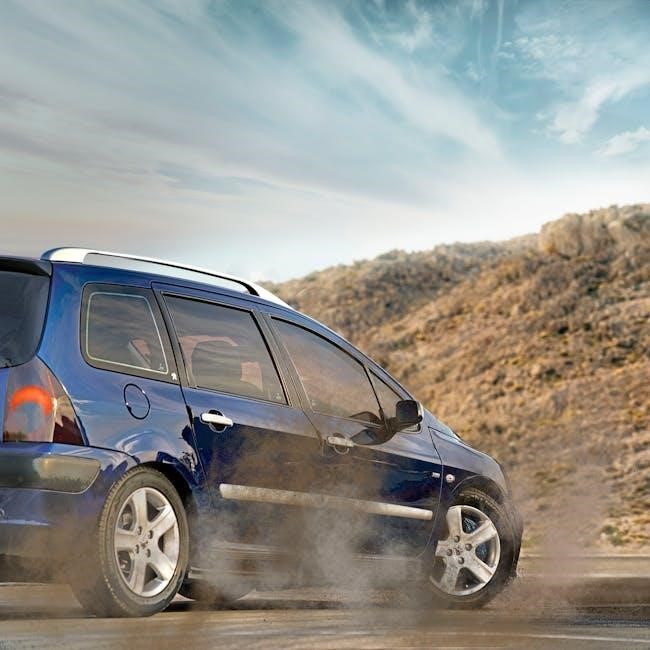
Case Studies and Real-World Examples
Real-world examples highlight successful conversions, such as a Honda Accord owner achieving improved performance. Failed attempts often cite parts compatibility and labor complexity as key challenges.
Successful Conversion Stories
Many enthusiasts have successfully converted their automatic vehicles to manual transmissions, achieving enhanced performance and driving satisfaction. For instance, a Honda Accord owner upgraded to a manual setup, boosting acceleration and fuel efficiency. Another case involved a Ford Mustang owner who installed a T5 transmission, significantly improving control and responsiveness. These stories highlight the benefits of careful planning, proper component selection, and skilled execution, inspiring others to pursue similar projects.
Lessons Learned from Failed Conversions
Failed conversions often stem from insufficient planning or improper component selection. One common mistake is ignoring the need to modify the ECU, leading to compatibility issues. Another issue arises when enthusiasts underestimate the complexity of the process, resulting in incomplete installations. Additionally, using incompatible parts, such as mismatched gear ratios, can cause poor performance and mechanical failure. These pitfalls emphasize the importance of thorough research, professional guidance, and precise execution to ensure a successful conversion.
Interviews with Experts
Experts in transmission conversions emphasize the importance of proper planning and component compatibility. Many recommend consulting with experienced mechanics or transmission specialists to avoid common pitfalls. EricTheCarGuy, a well-known automotive expert, highlights the need for ECU modifications when switching from automatic to manual. Others stress the importance of using high-quality components to ensure reliability and performance. These insights provide valuable guidance for enthusiasts embarking on a transmission conversion project.
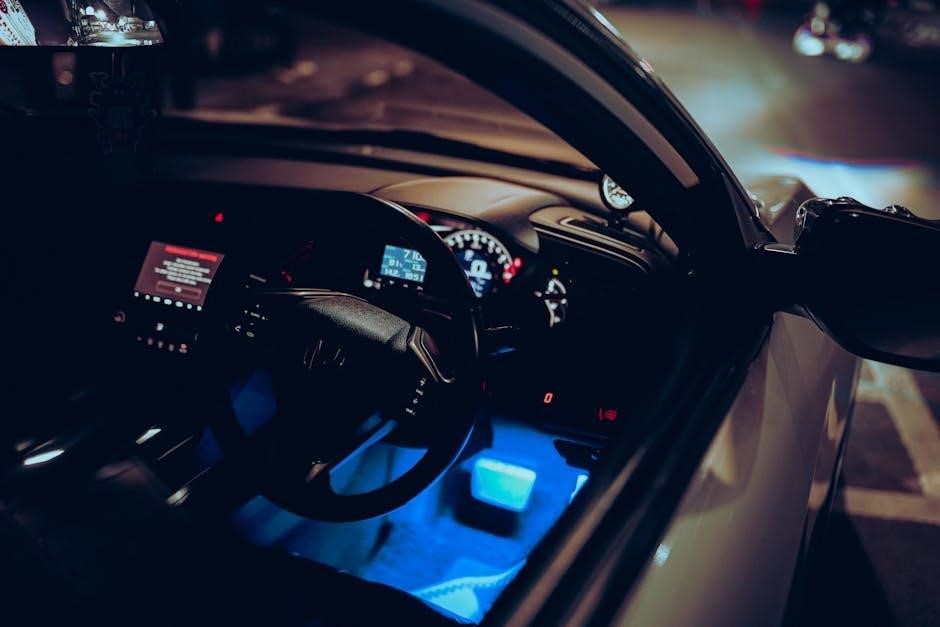
Community and Support Resources
Online forums and communities provide valuable insights and support for transmission conversions. Workshops and hands-on training sessions are available for enthusiasts. Professional services also offer expert assistance.
Online Forums and Communities
Online forums and communities are invaluable resources for those exploring automatic to manual transmission conversions. These platforms offer practical advice, technical insights, and support from experienced enthusiasts and professionals. Members often share detailed guides, troubleshooting tips, and personal experiences, making them indispensable for overcoming challenges. Whether you’re seeking advice on parts selection or installation, these communities provide a wealth of knowledge to ensure a successful conversion. Engaging with these groups can significantly simplify the process and connect you with experts who understand the complexities involved.
Workshops and Hands-On Training
Workshops and hands-on training programs provide practical experience for those aiming to convert their automatic transmission to manual. These sessions, often led by experienced mechanics, cover the technical aspects of the process, including component installation, clutch system setup, and troubleshooting. Participants gain valuable insights and skills, enabling them to tackle the conversion with confidence. Such training also emphasizes safety precautions and best practices, ensuring a smooth and successful transition from automatic to manual transmission.
Professional Services for Conversion
Professional services for automatic to manual transmission conversion offer a hassle-free solution for car enthusiasts. Experienced mechanics handle the entire process, ensuring precision and reliability. These services typically include installing conversion kits, adjusting the clutch system, and fine-tuning the drivetrain for optimal performance. Many shops specialize in specific vehicle models, providing tailored solutions. By hiring professionals, car owners can avoid common pitfalls and ensure a seamless transition, while also maintaining their vehicle’s warranty and resale value.
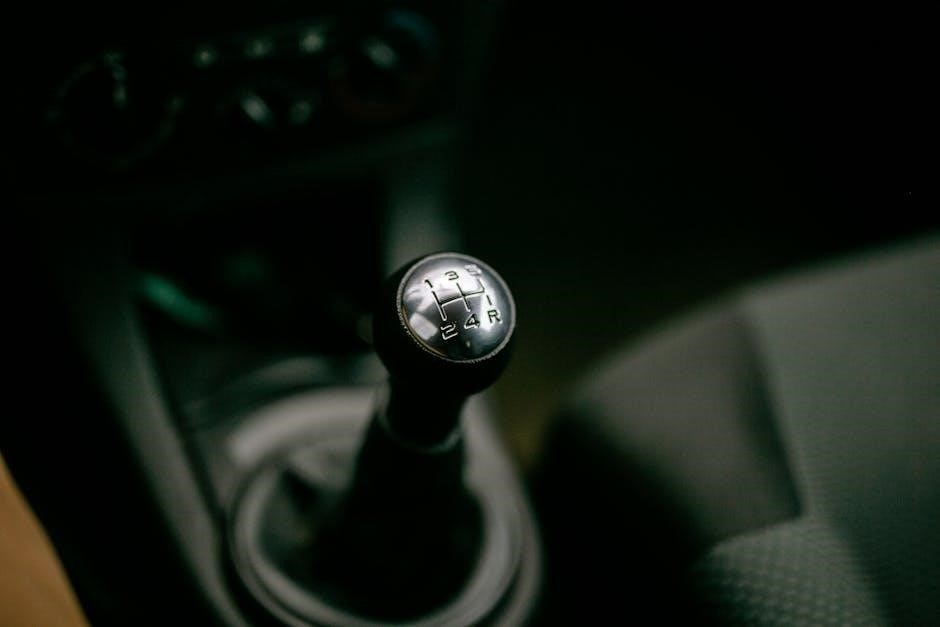
Maintenance and Upkeep Post-Conversion
Regular maintenance post-conversion ensures optimal performance. Check clutch systems, drivetrain alignment, and fluid levels. Address worn components promptly to maintain smooth operation and prevent costly repairs.
Regular Maintenance Requirements
Post-conversion, regular maintenance is crucial to ensure smooth operation. Check clutch pedal adjustment, inspect for worn components, and monitor transmission fluid levels. Lubricate moving parts and inspect drivetrain alignment. Regular inspections prevent premature wear and potential breakdowns. Address any issues promptly to maintain performance and avoid costly repairs. Proper maintenance extends the life of the manual transmission system and ensures a seamless driving experience over time.
Troubleshooting Common Issues
Common issues post-conversion include clutch slippage, gear grinding, and alignment problems. Check for worn clutch components or incorrect pedal adjustment. Grinding gears may indicate improper shifting techniques or a need for clutch replacement. Misaligned drivetrain components can cause vibrations. Regular inspections and addressing issues early prevent major repairs. Proper diagnosis ensures the system operates efficiently, minimizing downtime and maintaining optimal performance. Always refer to conversion kit guidelines for specific troubleshooting steps tailored to your setup.
Upgrading Components for Optimal Performance
Upgrading components post-conversion enhances performance and driving dynamics. Lightweight flywheels improve acceleration, while performance clutches offer better grip and durability. Short-throw shifters reduce shifting effort, making gear changes smoother. Cooling systems can be upgraded to prevent overheating during aggressive driving. However, such upgrades may compromise smoothness in daily driving. Always consult the conversion kit’s documentation to ensure compatibility and optimize performance without compromising reliability. These upgrades cater to enthusiasts seeking enhanced driving experiences.

Future Trends in Transmission Technology
Advancements in hybrid systems and automation are transforming manual transmissions, offering seamless shifting and efficiency. Lightweight materials enhance performance, making future conversions more accessible and efficient.
Advancements in Manual Transmission Design
Modern manual transmissions feature lightweight materials, improved gear ratios, and optimized synchronizers for smoother shifting. Dual-clutch systems enhance performance and efficiency, while hybrid-integrated manuals reduce fuel consumption. These advancements make manual transmissions more appealing, blending performance with practicality. Innovations in design also focus on reducing weight and increasing durability, ensuring longevity and reliability. Such progress is driving the adoption of manual transmissions, even in hybrid and electric vehicles, offering drivers the best of both worlds.
Hybrid and Electric Vehicle Implications
Hybrid and electric vehicles present unique challenges for manual transmission conversions. While most hybrids rely on automatic systems, some models allow manual integration, enhancing driver engagement. Electric vehicles, with their instant torque, often bypass traditional transmission needs. However, enthusiasts explore custom setups, blending manual controls with electric motors for a distinctive driving experience. These conversions highlight the adaptability of emerging automotive technologies, offering innovative solutions for performance-oriented drivers. The integration of manual transmissions in hybrid and electric vehicles continues to evolve, driven by technological advancements and niche demand.
Automation in Manual Transmissions
Automation in manual transmissions is redefining traditional driving experiences. Modern systems like automated manual transmissions (AMTs) use robotic actuators to shift gears automatically, eliminating the clutch pedal. These systems aim to combine the efficiency of manual transmissions with the convenience of automatics. While they improve fuel efficiency and reduce driver effort, purists often prefer the tactile engagement of fully manual controls. Automation in manual transmissions represents a bridge between classic and modern driving, offering a compromise for those seeking ease without sacrificing performance.
Converting from automatic to manual transmission is a significant decision, requiring careful consideration of both benefits and challenges. Weigh the pros and cons thoroughly before proceeding.
Final Thoughts on Transmission Conversion
Converting from automatic to manual transmission is a complex process requiring careful planning and investment. While it offers improved performance and fuel efficiency, it demands significant time and resources. For enthusiasts seeking enhanced control, the rewards can be substantial. However, the challenges and costs may outweigh benefits for some. Ultimately, thorough research and professional guidance are essential to ensure a successful conversion. The satisfaction of achieving a manual transmission system can be rewarding, but it requires dedication and expertise.
Encouragement for DIY Enthusiasts
For ambitious DIY enthusiasts, converting an automatic to a manual transmission offers a rewarding challenge. With determination and the right tools, you can transform your driving experience. Start by researching compatible components and seeking advice from experts. Join online forums and workshops to gain insights from experienced converters. Patience and meticulous attention to detail are key. Embrace the journey, and you’ll not only save money but also gain a deeper connection to your vehicle. The sense of accomplishment is unparalleled for those who dare to take on this project.
